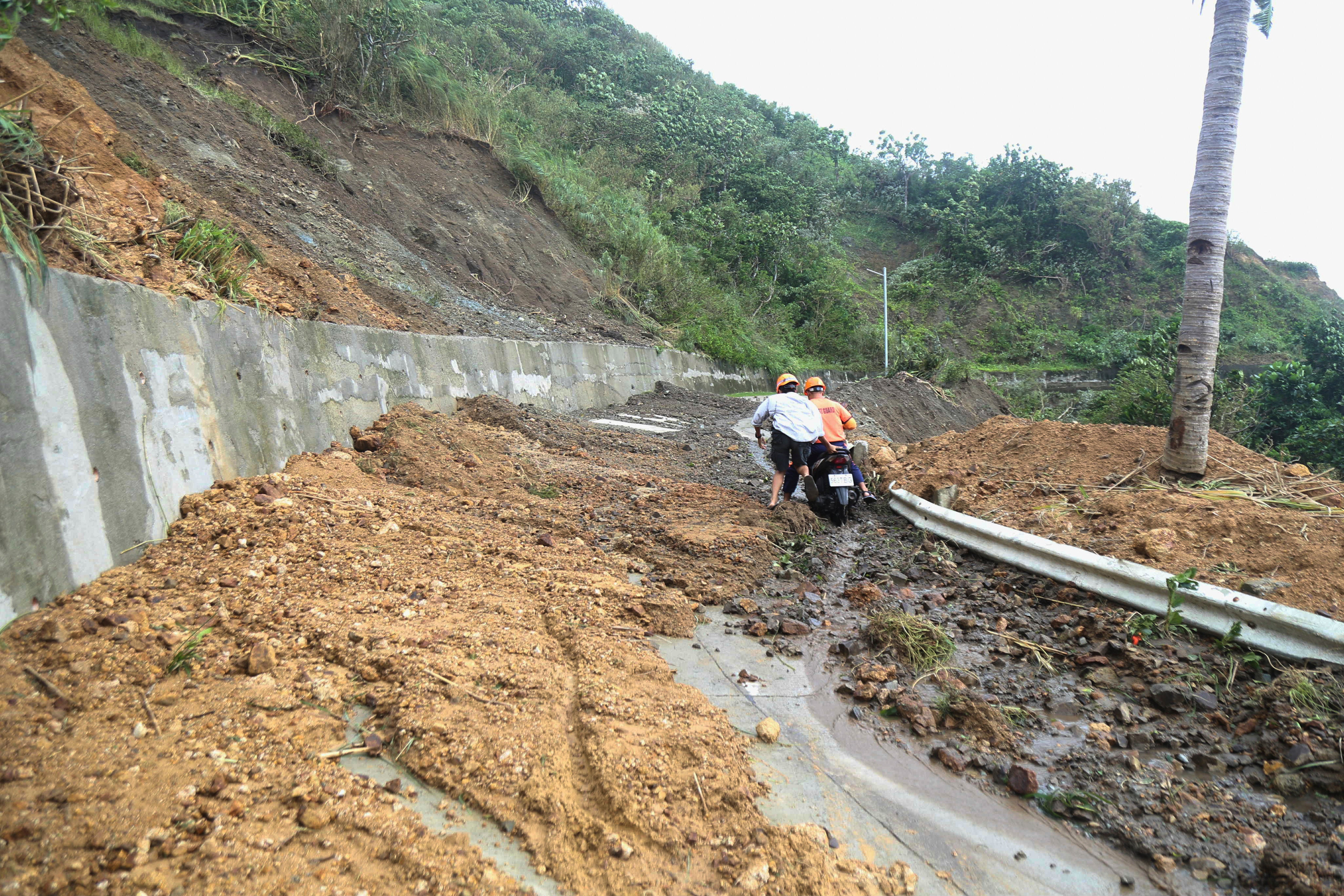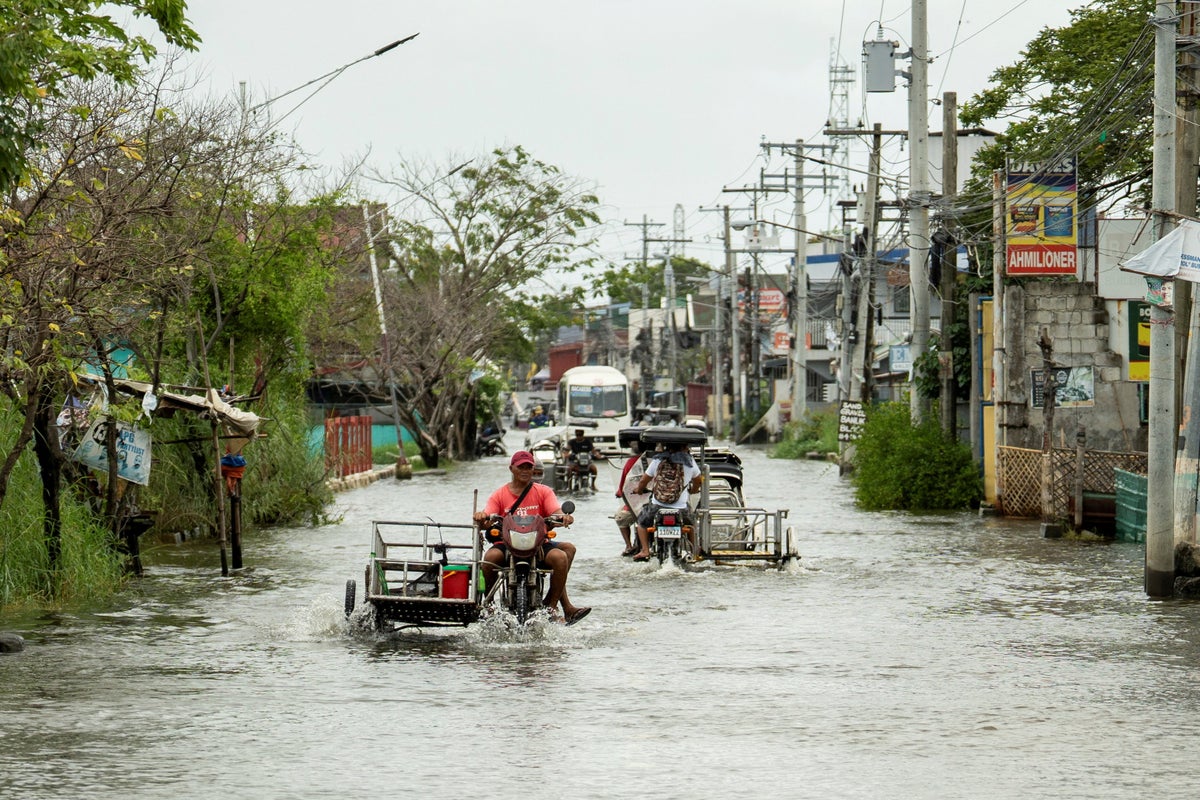Typhoon Ragasa, the most powerful storm recorded on Earth this year, has hit East Asia with terrifying force. It has brought several Asian megacities to a standstill, and killed at least 15 people with over a dozen more missing.
In the Philippines, at least three people were killed after the storm triggered widespread flooding and landslides. But the island nation was in some ways lucky: It made landfall on the remote Batanes and Babuyan islands, which are some 60 miles north of the most populous island of Luzon.
The increasing frequency and intensity of tropical storms due to climate change, as well as the devastating cuts by Donald Trump to aid programmes funding climate resilience this year, is exposing the country to greater risk from storms. The Philippines took a $104 million (£77m) hit with the closure of the United States Agency for International Development (USAID), according to the Centre for Global Development, with that cut representing 95 per cent of the US overseas aid programme in the country.
One organisation directly affected was the Center for Disaster Preparedness (CPD): An NGO running a disaster risk reduction scheme, which focuses on early warning systems for natural disasters like typhoons, as well as disaster preparedness education programmes.
It works across 200 barangays – or local communities in The Philippines – helping develop tailored disaster responses that encompass local or indigenous knowledge for some of the country’s 42,000 villages.
“We have a National Early Warning System, that tells us if a typhoon is coming, but our work is about helping communities have their own response structure,” says Mayfourth Luneta, deputy director of CDP. “We help them to work out who should evacuate, where should they go, what is the best local signalling system – for example, a conch or a bell – and also develop some mitigation activities like bamboo dykes.”
An example of Filipino indigenous knowledge, Ms Luneta adds, would be the knowledge that when a banana tree branch falls without the wind blowing, it means a typhoon is likely coming. Science now tells us that this occurs due to a reduction in sunlight, meaning less photosynthesis, which results in weaker branches.
But the ability for CPD to develop local response plans was severely hampered earlier this year, when the charity lost about 25 per cent of its budget due to the closure of USAID. This resulted in job losses at the NGO, and programmes across six communities being cancelled.
“These communities were left without completed plans, which were intended to help preparedness and resilience in the face of disasters like typhoons,” says Ms Luneta. “We had a lot of explaining to do ton the communities about why what we were doing was cancelled halfway through.”
Trying to fill the gap left by USAID has also been very hard, Ms Luneta adds, due to how competitive it has become among other donors.

CPD is also not the only NGO working in the country that has seen its programme cut as a result of cuts to overseas aid.
A source at Save the Children’s Philippines programme, for example, told The Independent that following January’s order for the USAID to stop work order in January, several programmes in the Bangsamoro Autonomous Region – an area prone to disasters like floods, landslides, earthquakes, and drought – were left incomplete.
The source said that the charity was developing a programme to protect children, pregnant women, and lactating mothers during disasters and emergencies, which included working with local governments to improve their services before, during, and after disasters and emergencies, and producing child-friendly information material.
“Our partners were ready to start these activities in February, but the funding cuts disrupted everything,” the Save the Children source said.
All of this has come at a time when the climate crisis has made the extreme weather and its impacts a far greater worry.
Luneta is currently anxiously waiting for news back from communities where CPD is working in the aftermath of Typhoon Ragasa – and she knows that this will not be the last time she finds herself in this position.
“Big typhoon events that used to come every 10 years are coming every other year, or every year,” she says. “The dry season also used to always hover around 30C or 31C, but now it often hits 40C.
“Climate change is really affecting us here in the Philippines”.
This article was produced as part of The Independent’s Rethinking Global Aid project




